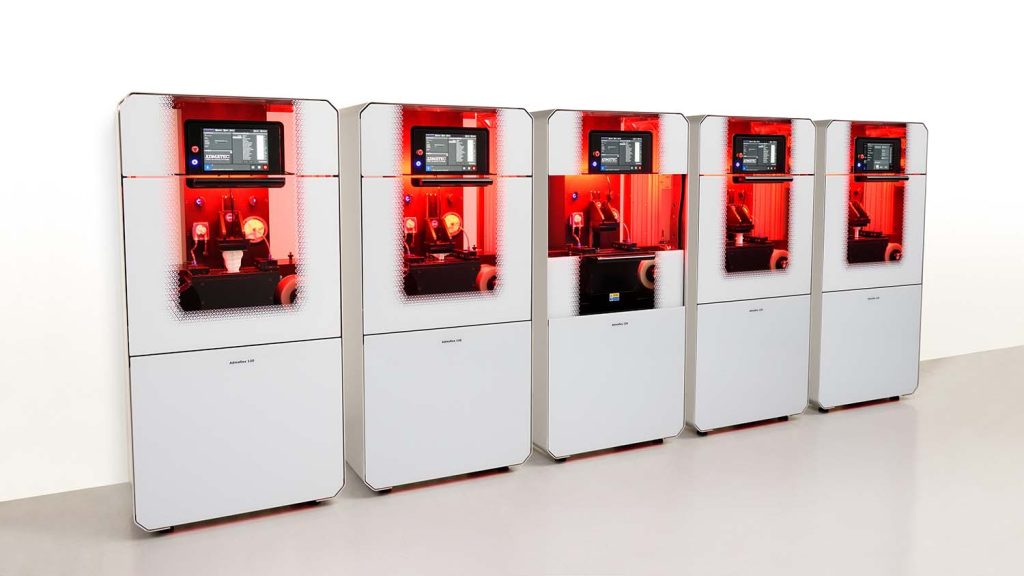Nano Dimension has announced the acquisition of Formatec Holding, which includes its two subsidiaries Admatec and Formatec, to accelerate transition to Industry 4.0 and expand its AM materials portfolio.
Admatec/Formatec is a developer and manufacturer of additive manufacturing and 3D printing systems for ceramic and metal end-user parts, which, before the acquisition, was part of the US-based company Precision Surfacing Solutions.
Nano Dimension says that the acquired company’s industry-grade systems – powered by digital light processing technology – use materials with superior mechanical, electrical, thermal, biological, and chemical properties, to produce an array of parts for medical, jewellery, and industrial, and investment casting uses.
The company said that Admatec/Formatec has shown promising financial results, indicating that accelerated growth based on its innovative technology can be expected. The business said it delivered £4.3 million in revenue with a gross margin of 56% in 2021.
Nano Dimension, which has paid a total cash sum of £10.8 million for Admatec/Formatec, said it believes that Admatec/Formatec is now poised for even greater success within the Industry 4.0 landscape.
Nano Dimension’s expertise in learning-based AI, additive manufacturing, materials science, and robotics, is planned to enable advanced breakthroughs across the Admatec/Formatec set of solutions, and is expected to drive competitive edges for customers.
Nano Dimension’s go-to-market platform looks to accelerate and broaden the reach of Admatec/Formatec’s products and services to growing markets, particularly in the United States and Europe, where a tailwind of macro trends is driving demand for AM while onshoring and localising high-mix low-volume manufacturing.
With Admatec/Formatec, Nano Dimension aims to add two aspects to its offering in the AM domain: materials and new product types.
With this acquisition, it should be able to benefit from ceramic and metals, two critical materials for developing applications and end-use parts.
Nano Dimension said that, to date, it has mainly focused on AME and Micro-AM and that, from now on, it should be able to offer new Admatec/Formatec product types as well, and allow customers to print larger parts, going from millimetres to multiple centimetres.
This should be further enhanced by the combination of possibilities for Nano Dimension with 3D-Additive Manufacturing integrated with metal injection moulding.
“The teams across Admatec and Formatec are excited to become a part of Nano Dimension,” said Admatec/Formatec CEO Jaco Saurwalt.
“We are proud of how we have developed this business and are convinced that we shall be able to expand and accelerate our growth based on our present technology and services. We expect that the combined expertise with Nano Dimension will further establish a leading position in the high-mix-low-volume metal 3D-AM production markets.”
“Admatec/Formatec’s scientists, engineers and other team members, all of whom joined Nano Dimension upon closing of this transaction, are experts and industry veterans in AM 3D-industrial processes. They are going to continue to be led by their present management team,” said Nano Dimension CEO Yoav Stern.
“Admatec/Formatec’s products and services expand Nano Dimension’s Fabrica Division, adding volume manufacturing capabilities to the high precision micro-mechanical Fabrica 2.0 systems.”
“No less important is our intention to use our deep learning-based artificial intelligence technologies, from our DeepCube acquisition, to become the ‘robotic brains’ for Admatec/Formatec systems,” he went on.
“We expect this will improve yield and throughput and drive a more seamless integration with Nano Dimension’s fabrica systems. Admatec/Formatec’s machines and services fit the larger picture of Nano Dimension’s vision, aiming to establish Industry 4.0 solutions, which entail building an AI-based distributed digital manufacturing application rather than just machines as capital equipment.”
“The end goal is to reach a capability for maintaining digital inventory of high-end printed mechanical parts in digital form: print them as you need them, where you need them, only the quantity you need, in the best quality at competitive prices, with the highest yield and throughput possible for that point in time, specifically for high mix/low volume scenarios,” concluded Stern.






